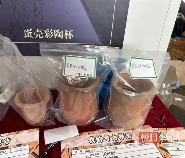Unearthing Ancient Crafts through Stable Isotope Analysis in Xinyang, China
In a groundbreaking development in the field of Chinese archaeology, a recent excavation near Xinyang, Henan Province, has unveiled a treasure trove of jade bracelets. The artifacts provide a remarkable insight into the ancient crafts and the daily lives of people from prehistoric times. Archaeologists are using stable isotope analysis to uncover the secrets hidden within these precious jade objects.

The discovery of these exquisite jade bracelets was made during an archaeological survey conducted in the region. The team of researchers includes leading experts from the Northeastern University, who specialize in advanced isotopic analysis. Their work not only highlights the technical prowess of ancient artisans but also offers a glimpse into their social structures and economic exchanges.
The jade used in these bracelets is believed to be sourced from several local quarries, and the isotope profiles of the stone reveal unique signatures that point to specific geological origins. These findings shed light on the procurement practices and trade networks of early civilizations in Xinyang. Further analysis reveals that the jade bracelets were crafted using a range of techniques, indicating a diverse skill set among the local artisans.
The stable isotope analysis has provided invaluable data on the diets of the individuals buried with these jade pieces. Traces of certain foods and minerals found in the isotope signatures suggest that the wearers of these bracelets enjoyed a varied diet that included both plant and animal products. Such dietary insights contribute significantly to our understanding of the daily lives and cultural practices of the inhabitants of this region.
The ongoing research is part of a larger initiative aimed at preserving and promoting the cultural heritage of Xinyang. The local authorities have partnered with Northeastern University to establish a museum that will showcase these artifacts, along with other historical finds from the area. This project aims to engage the public in the rich history of Xinyang and raise awareness about the importance of archaeological conservation efforts.
 LongStory.Asia The Digital Archaeological Portal
LongStory.Asia The Digital Archaeological Portal